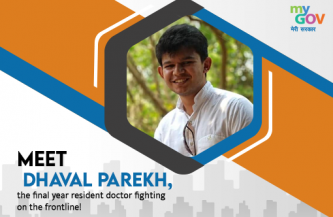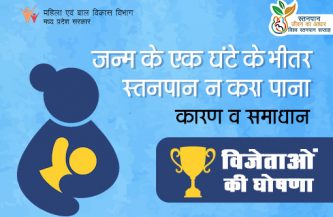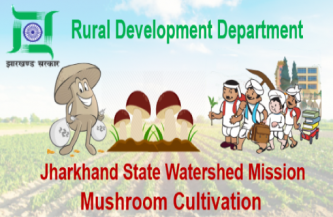Case Study: MyGov enabling participative decision making – Budget 2015

Noted social activist Michael Moore was at his pithiest best while summing up the essence of democracy: “Democracy is not a spectator sport, it’s a participatory event. If we don’t participate in it, it ceases to be a democracy.”
While commentators have, over the centuries, debated the multiple benefits of democracy over other forms of governance, it is its participatory nature that has almost unanimously been recognised as the most outstanding feature. Democracy, in its normative form, while electing a leader through a transparent process, expects that leadership to make decision making a participative process where citizens have an important pro-active voice in policy making. But what is it about participative leadership that makes it so attractive?
First, involvement in decision-making improves the understanding of the issues involved by those who must carry out the decisions. This means the actual effect of the policy is factored in at the stage of policy making itself thereby insulating it from remaining a mere academic exercise. Second, people are more committed to the actions flowing from the policy where they have been involved in the relevant decision-making. The citizens, who will actually be affected by the policy, have become a stake holder in the policy so framed rather than it being handed top down, and thus have more stakes in making the policy work. Third, people are less competitive and more collaborative when they are working on joint goals. Fourth, when people make decisions together, the social commitment to one another is greater and thus increases their commitment to the decision.
Mahatma Gandhi, one of the greatest personalities of twentieth century, was among the first to understand the power of such participative decision making process to mobilize public opinion and this is what contributed to his enormous achievement of converting the freedom movement into a mass movement. Prime Minister Narendra Modi, inspired by the great Mahatma, has often spoken of learning from this great heritage and deploying it in modern context of converting the development and governance paradigm into a mass movement.
It is with this ambition that MyGov was launched by the Prime Minister on 26th July 2014 as a citizen online engagement platform. The avowed aim of the platform was to achieve the following purposes: A) Pro-active citizen participation in policy making; B) Citizen participation in governance tasks; and C) Volunteer participation to achieve synergy in the ideas and discussions in online world with action on the ground.
One of the conscious decisions taken during the conception stage of MyGov platform was to have no activity on MyGov without a buy-in by a relevant department or ministry of the government of India. This was done to ensure that all discussions and tasks on MyGov would have a defined closure point and therefore the valuable time that citizens spend on MyGov would be tied up with a clearly defined proposed action of the government. This way, MyGov would become a useful platform for citizens, retaining the flavour of a free flowing online general discussion forum, while avoiding the trap of only remaining a discussion forum.
This conceptual clarity at the level of the head of government, with a clearly defined mandate to ministries and departments to factor-in the citizen suggestions in discussions and tasks they have initiated on MyGov, in the eventual policy, program or schemes they frame, has resulted in much success for MyGov since its launch. The names of the very popular Pradhan Mantri Jan-Dhan Yojana and the now ubiquitous logo for the Swachh Bharat Abhiyan were generated by contributors on MyGov. The Prime Minister himself has used the MyGov platform to regularly source citizens’ ideas and aspirations for his very popular, monthly “Mann ki Baat” dialogue with citizens.
The confidence generated by these early successes encouraged both ministries and the citizens to engage in crowd sourcing for even broader participation. The Ministry of Railways and the Ministry of Finance, thus initiated discussions seeking ideas from citizens for consideration for the Railway Budget and the General Budget respectively. In what was clearly a first, crowd sourced ideas from citizens, generated on MyGov, became actual government proposals in the respective budgets for the year 2015-16. The implications of a direct platform for citizens, where they could articulate their aspirations and needs to the government, without any intermediary or middlemen, can be seen in some of the far reaching ideas that became actual budget proposals.
For the Railway Budget, suggestions that have been incorporated in the actual proposals include proposals to fit bio-toilets and vacuum toilets in rail coaches to improve cleanliness; providing concessional e-tickets to differently-abled passengers; provision to order food online at the time of booking of tickets through IRCTC; integrating popular private food chains with the pantry network of railways; installation of digital display networks on platforms to provide real time information to citizens and the involvement of ISRO for providing audio-visual warnings to passengers at unmanned level crossings by using geo-spatial technology. A more detailed description of MyGov user suggestions reflected as actual proposals can be read here.
In the General Budget for 2015-16, some of the innovative proposals that have been incorporated include the proposal to enable monetization of gold and launching of sovereign gold bonds; proposal to abolish wealth tax and simplify tax structures; special tax incentive for promotion of Yoga; proposal to make sharing of PAN number mandatory for cash transactions above a specified value; 100% tax benefit for contributions to Swachh Bharat fund; utilization of vast postal network for improving access to banking in remotest corners of India and the proposal to introduce a law to penalize non disclosure of foreign bank accounts and to tackle benami property holdings in India. A more detailed description of MyGov user suggestions reflected as actual proposals can be read here.
These suggestions were thought of by the citizens themselves. They are aspirational in nature in some cases and practical in others. A gold monetization scheme can have transformational affect on the economy. Integrating of popular food chains with rail pantry network and simultaneously enabling the citizens to order food online would, while appearing as simple suggestions, enormously change the passenger experience for those who are travelling by rail network.
The implications of such participative decision making process are enormous. Development as a paradigm of general national discourse is a rather abstruse concept. However, if the broad long term governance framework can be converted into an easily identifiable specific time bound programs, with which the citizen can identify themselves in the immediate term, then it is easier to weave it into the national fabric. The General budget each year is an important policy document of the government, detailing the framework by which the government intends to manage the economy in the medium to long term. However, what is in it for me in the next budget is the most pertinent question by citizens in the build up to each year’s budget. The art of socially and emotionally investing the people in the governance paradigm is to somehow interlink these two strains. With MyGov platform acting a bridge, the citizen now has not to wait till the end of budget process to find out what is in it for them but can pro-actively help in deciding what do they want from the budget. One simple exercise of participative decision making and the budget becomes not a government’s document alone but a document of the people. The emotional commitment gets built-in and the abstruse development paradigm is on its way to becoming a participative mass movement. The platform that is enabling this is the MyGov platform, translating the vision of Prime Minister Narendra Modi into a reality.
Total Comments - 103
Leave a Reply
You must be logged in to post a comment.





 Login
Login
Hello sir I want to say that in Atal Pension scheme the age limit should be increased upto 45 years. This is a humble request to please increase the age limit and it will prove beneficial to millions of citizens of India
Dear sir, I am A.R.Suresh from Tamil Nadu india. I would like to help in the development of india. Economy is based on GDP-indirectly per capita income. So there is no announcement to improve the minimum wages amount from Rs.4500 to at least Rs.7500. I am sure this will increase the growth rate to double digit. The nutrition Poverty line statement says Rs.45/person in urban area. So in a family of 5 we get 45X30daysX5=6750+medical Rs500+ transportation 2000 for 5 person=9250. but i specify 7.5k
Respected PM & FM,
I have experienced few Govts. allowing citizens to pay their Income Tax in equal monthly installments.
Especially salaried people. For industrialists more than one installment.
It will be helpful for them to balance the tax burden, savings, family occasions and investments.
Thanks
Kannan
The Budget should Clear Land Acquisition act which Opposition has faslely hype with Media and put fear among Common man
Today, India is facing Many Issues mainly:
1. Population explosion.
2. Economy.
3. Infrastructure.
4. Education.
5. Social development.
6. Dirty and Vote bank politics.
7. Weak Defence.
8. Media Role.
9. Corruption.
10. Unemployment.
Its very sad that in Recenet Budget Central Government has stopped financing the Scheme for the Civil Defence Mainstreaming Under Modernisation of Police Forces which was launched in June 2014. Under this scheme, it was also there a team of experts who monitor the activities of civil defence at national level. After this step, these team of experts are not there in the system. They have been terminated from the scheme by saying Government has closed down the scheme.
PrajaPrabhutva
participatory democracy is what we are looking forward too. India has viberant democracy and its citizen its pillars. Ifirmly believe that if councils or Gram Sabha or urban sabha is made with minimum of 25,000 population and suggetions documented and sent to the select committee half of the work of the government is reduced. Acommon citizen would love to see his proposals find a shape in the goverance.Participatory democracy requires mass channalization of thoughts and actions.
(F)For make white money take 5%tx on black money
(B) manufacturer pay 1.5% to 2%tax on lending cost &1.5%to2% on selling cost (C) wholesaler ,retailer pay 1.5% to 2%tax on lending cost (D).Doctor, mechanic etc. Pay 1.5 to 2% tax on service work (E).If a businessman paid 50000 rs tax so his purchase amt is=50000×10=500000(for job worker 50000×30=1500000) but he wants to buy car=700000rs so taxable amt is200000 rs so he will pay 5% tx on 200000rs&who do not pay any tax they pay 5% more tax on bike, car , bungalow etc & more next